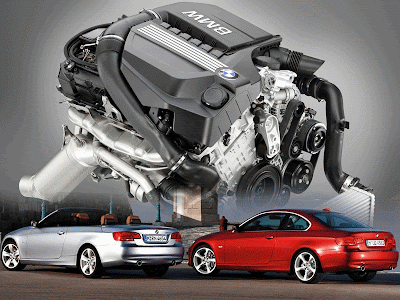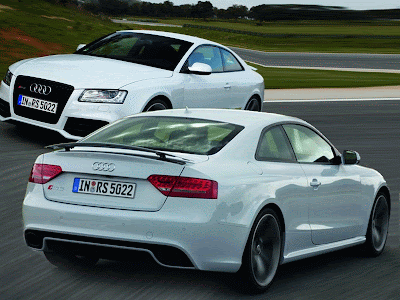A little after a leaked brochure gave us our first taste of the lightly refreshed 2011 3-Series Coupe and Convertible models, BMW rushed out an official release and a whole bunch of pictures. For the 2011 model year, the Bavarian automaker's bread-and-butter coupe and cabriolet models receive some minor cosmetic touches and updated powerplants.
2011 BMW 3-Series Coupe and Convertible
The most notable - that is, if you're a hardcore bimmer fan- changes on the outside concern the widened kidney grille, reshaped LED headlamps, front and rear bumpers with restyled lower fascias, new exterior mirrors and finally, reworked tail light cluster with a new color scheme.
2011 BMW 3-Series Coupe and Convertible
The only change in the cabin concerns the convertible models and the use of sun-reflective technology to mitigate temperatures on leather seating, armrest surfaces, headrests, and gear shifter. BMW says that this new treatment is able to reduce surface temperatures on dark interior colors by up to 20 Celsius degrees (36 Fahrenheit degrees) and by as much as Celsius degrees (27 Fahrenheit degrees)on light-colored upholstery.
2011 BMW 3-Series Coupe and Convertible
The next-generation BMW 3 Series isn't that far off, with the sports sedan expected to debut sometime in 2011 as a 2012 model. Yet the Munich brand isn't sitting on its hands in the meantime – the current 3 Series coupe and convertible are getting a mild refresh and updated powerplants this spring for the 2011 model year. The most immediately noticeable change are headlamp clusters that get a subtle reshaping to go along with a wider grille and reworked lower front fascia. At the rear, the taillamps retain the same shape, but the reflectors are redesigned with some of the light-pipe styling found in other recent Bimmers.
2011 BMW 3-Series Coupe and Convertible
The 3 Series coupe will now be offered with xDrive all-wheel drive, while the 3 Series convertible gets a new solar reflective leather upholstery that BMW claims helps keep seat temperatures down when the lid is open.
2011 BMW 3-Series Coupe and Convertible
The most significant updates come underhood, where the much lauded twin-turbocharged 3.0-liter inline-six is being replaced by a new single turbo version. The revised engine, dubbed N55, has recently been launched in the 740i and the 535i Gran Turismo. The twin scroll turbo has dual exhaust inlets that allow the engineers to better balance the pulses coming in to spin up the turbine faster. This is expected to reduce the turbo lag that some drivers complained about with the outgoing twin turbo setup.
2011 BMW 3-Series Coupe and Convertible
BMW also claims it has reduced cold-start emissions by routing all the exhaust gases through a single, larger catalytic converter that heats up faster. On the intake side, the throttle is eliminated thanks to the addition of BMW's Valvetronic variable valve control system. The N55 also gets direct fuel injection. The end result is the same 300 horsepower and 300 pound-feet of torque as before, but with a fatter torque curve that maintains its peak from 1,200-5,000 rpm.
2011 BMW 3-Series Coupe and Convertible
The new design of the taillights is unique to the 3 Series Coupe and Convertible. The rear light cluster feature two-piece L-shapes and are further accentuated by a new color scheme. With two rows of light tubes that illuminate simultaneously, they create a night design with depth and dimension. Integrated flush into the body of the car, the lights are split into two sections and extend up the trunk lid, blending with the character lines from the side profile. These styling tweaks have resulted in a slightly longer length and larger overhangs (29mm (1.14 inches) at the front, and 3mm (0.12 inches) at the rear)
2011 BMW 3-Series Coupe and Convertible
Though the updated BMW 3 Series Coupe and Convertible will go on sale this Spring, pricing and fuel economy figures haven't been announced as of yet. The former is expected to fall in the range of the current car's pricing, which starts at $37,075 for the 328i Coupe, $42,535 for the 335i Coupe, $45,875 for the 328i Convertible and $52,075 for the 335i Convertible. The latter is expected to be a small improvement in fuel economy for the new single-turbo engine over the current twin-turbo engine's 17 mpg city and 26 mpg highway.



























